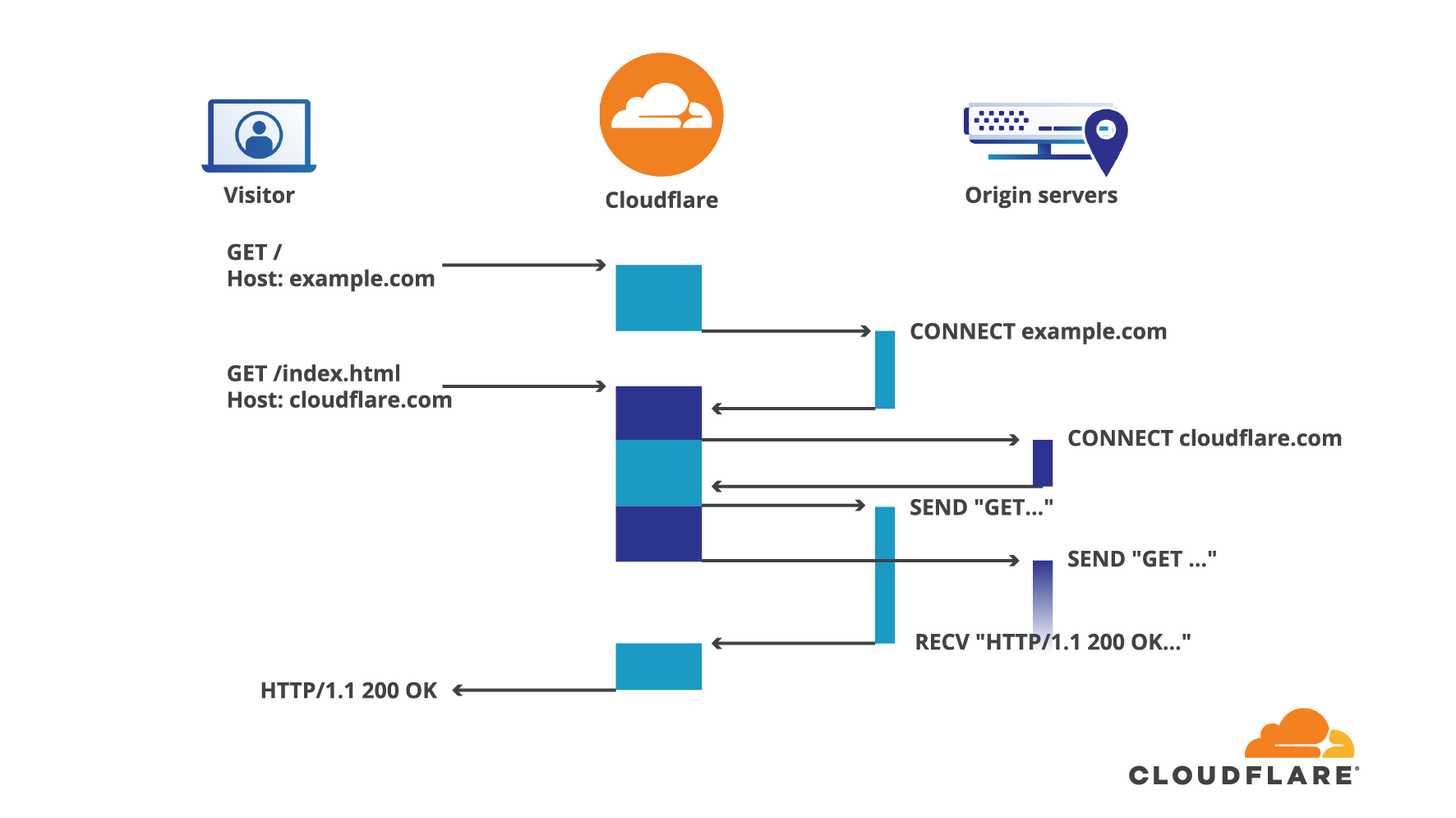Author Archives: Julien Desgats
Author Archives: Julien Desgats

Back when Cloudflare was created, over 10 years ago now, the dominant HTTP server used to power websites was Apache httpd. However, we decided to build our infrastructure using the then relatively new NGINX server.
There are many differences between the two, but crucially for us, the event loop architecture of NGINX was the key differentiator. In a nutshell, event loops work around the need to have one thread or process per connection by coalescing many of them in a single process, this reduces the need for expensive context switching from the operating system and also keeps the memory usage predictable. This is done by processing each connection until it wants to do some I/O, at that point, the said connection is queued until the I/O task is complete. During that time the event loop is available to process other in-flight connections, accept new clients, and the like. The loop uses a multiplexing system call like epoll (or kqueue) to be notified whenever an I/O task is complete among all the running connections.
In this article we will see that despite its advantages, event loop models also have their limits and falling back to good old threaded architecture is sometimes Continue reading

Back in April we announced Rate Limiting of requests for every Cloudflare customer. Being able to rate limit at the edge of the network has many advantages: it’s easier for customers to set up and operate, their origin servers are not bothered by excessive traffic or layer 7 attacks, the performance and memory cost of rate limiting is offloaded to the edge, and more.
In a nutshell, rate limiting works like this:
Customers can define one or more rate limit rules that match particular HTTP requests (failed login attempts, expensive API calls, etc.)
Every request that matches the rule is counted per client IP address
Once that counter exceeds a threshold, further requests are not allowed to reach the origin server and an error page is returned to the client instead
This is a simple yet effective protection against brute force attacks on login pages and other sorts of abusive traffic like L7 DoS attacks.
Doing this with possibly millions of domains and even more millions of rules immediately becomes a bit more complicated. This article is a look at how we implemented a rate limiter able to run quickly and accurately at the edge of the network which Continue reading